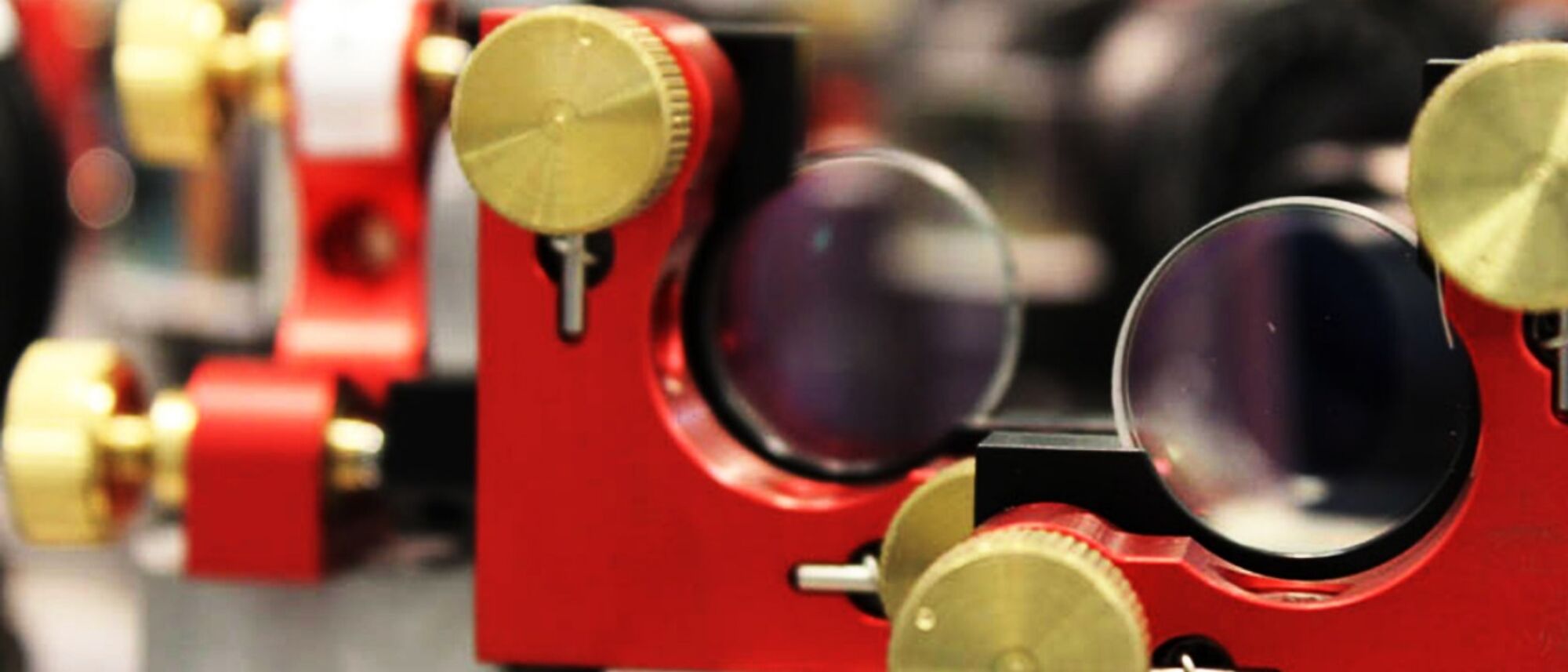
International Max Planck Partnership
Measurement and observation at the quantum limit
The International Max Planck Partnership (IMPP) brings physicists from five Scottish Universities and five German Max Planck Institutes together to establish collaborations around the theme of 'measurement and observation at the quantum limit'.
By working together and sharing their expertise, the partners are establishing new ideas in a wide range of experimental and theoretical research, and delivering new technologies.
High capacity communications using light's twist
The IMPP assisted Glasgow scientist, Professor Martin Lavery, to team up with a research group at the Max Planck Institute for the Science of Light, Erlangen, led by Professor Gerd Leuchs.
Having completed a PhD in the Optics group, Martin leads the Structured Photonics research group in the School of Engineering. His research is focused on the potential applications of the orbital angular momentum (OAM) of light, or light with a twist. Scientists can prepare light in a number of these twisted states, or modes. Utilising this technique offers the potential for very high capacity communication links through free space.
For his EPSRC First Time grant, Professor Lavery was investigating the how atmospheric turbulence can affect these OAM modes – or spatially shaped quantum states – as they travel from point to point.
“The temperature and pressure variation in the atmosphere results in a change to the optical density of the air, which in turn distorts the light as it travels from point a to point b. This same effect occurs when one sees stars twinkling at night, or distortions that occur on a hot day.”
Prof Martin Lavery
This interference can degrade the signal sent. In order to transform these OAM techniques into a viable technology, it is important to understand and minimise the effects of this interference.
The collaboration with Max Planck Erlangen meant Professor Lavery could use their 1-mile free-space link to conduct these tests. This simulated conditions in which the technology could be used in a real world setting.
“The focus of this research was on building-to-building optical links for high capacity communication links, similar to optical fibre communications. Such links can allow buildings to be connected without the requirement for expensive and time-consuming installation of optical fibre. Optical fibre costs around $100k per mile to install, free-space optical solutions could be considerably more cost effective.”
Prof Martin Lavery
The first study of its kind. It has produced a data set that will have substantial impact on the field of free-space quantum and classical optical communications. The work will be published soon.
“The International Max Planck Partnership was central to the formation of this collaboration, where an initial visit to the UofG by Prof Leuchs served as the first technical meeting on the project. The IMPP supported my travel to Erlangen to complete the research, and supported the work being presented at two international conferences.”
Prof Martin Lavery
What is the International Max Planck Partnership?
The multi-million pound partnership, with five prestigious Max-Planck Institutes (MPI) in Germany, is a major boost to the future development of new quantum technologies and fundamental science in Scotland.
It incorporates leading physics research groups from the universities of Glasgow, Strathclyde, St Andrews, Heriot-Watt and Edinburgh with The Max Planck Institute for Gravitational Physics (Albert Einstein Institute) Hannover; the MPI for the Science of Light, Erlangen; the MPI for Quantum Optics, Garching; the MPI for Chemical Physics, Dresden; and the MPI for Solid State Physics, Stuttgart.
The IMPP is supported by funding from the Scottish Funding Council, and a joint grant from the Engineering and Physical Sciences Research Council and the Science & Technology Facilities Council.
The Max Planck Society is Germany's most successful research organisation. Since its establishment in 1948, no fewer than 17 Nobel laureates have emerged from the ranks of its scientists, putting it on a par with the best and most prestigious research institutions worldwide.
The more than 15,000 publications each year in internationally renowned scientific journals are proof of the outstanding research work conducted at Max Planck Institutes – and many of those articles are among the most-cited publications in the relevant field.

